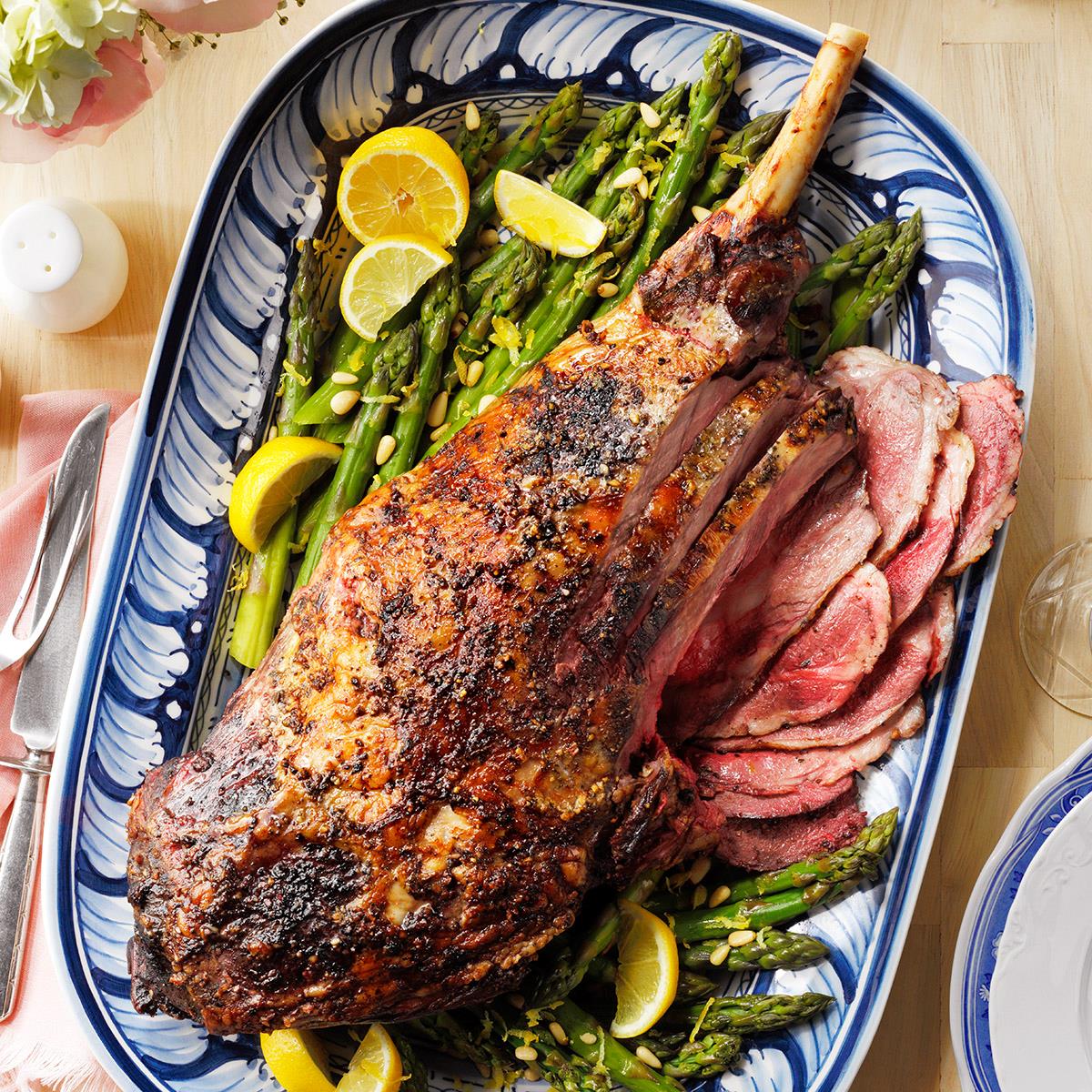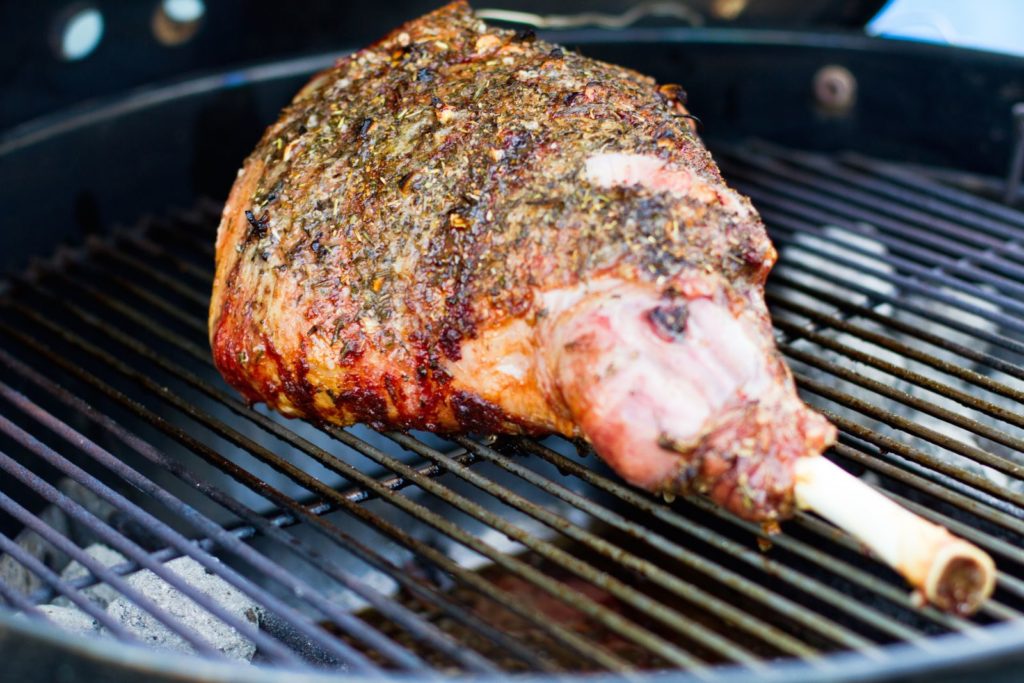Roast Leg Of Lamb: It sounds fancy, right? But trust me, this isn’t some stuffy, Michelin-star dish. We’re diving deep into the history, the how-to, and the deliciousness of this classic. From ancient cooking methods to modern twists, we’ll explore everything you need to know to impress your friends (or just yourself) with a perfectly roasted leg of lamb.
Get ready to become a lamb-roasting pro!
We’ll cover everything from choosing the right cut and prepping it like a boss, to mastering various cooking techniques – oven roasting, slow roasting, even grilling! We’ll also tackle the crucial aspects of serving and carving, plus share some killer side dish ideas. Think of this as your ultimate guide to lamb-roasting nirvana. Let’s get cooking!
Roast Leg of Lamb: A Culinary Journey
From ancient feasts to modern dinner tables, roast leg of lamb has held a prominent place in culinary traditions across the globe. This exploration delves into the rich history, diverse preparation methods, and delightful accompaniments of this classic dish.
Roast Leg of Lamb: Culinary History
Source: chefgordonramsayrecipe.com
The history of roasting lamb stretches back millennia. Evidence suggests that lamb was a significant part of early human diets, with roasting being one of the earliest cooking methods. Different cultures developed their own unique approaches to preparing and consuming roast leg of lamb, influenced by available resources and culinary traditions.
A timeline of significant milestones includes early evidence of lamb consumption in ancient Mesopotamia and Egypt, its prominence in ancient Greek and Roman cuisine, its adaptation into medieval European cooking, and its continued evolution through modern culinary innovations.
Traditional roasting methods often relied on open fires or wood-fired ovens, resulting in a characteristic smoky flavor. Modern techniques utilize controlled oven temperatures and specialized equipment for greater precision and consistency. The transition from open-flame roasting to oven roasting significantly impacted cooking times and the level of control chefs had over the final product.
| Weight (lbs) | Cooking Time (approx.) | Internal Temperature (°F) | Notes |
|---|---|---|---|
| 4-5 | 1 hour 15 minutes – 1 hour 30 minutes | 135-140 (medium-rare) | Adjust time based on oven and desired doneness. |
| 6-7 | 1 hour 45 minutes – 2 hours | 135-140 (medium-rare) | Consider using a meat thermometer for accuracy. |
| 8-10 | 2 hours 15 minutes – 2 hours 45 minutes | 135-140 (medium-rare) | May require basting for even cooking. |
Roast Leg of Lamb: Cuts and Preparation

Source: windows.net
Several cuts of lamb are suitable for roasting, each offering a unique texture and flavor profile. The leg, specifically, is a popular choice due to its size and suitability for large gatherings. Other cuts like the shoulder or loin can also be roasted, but require different cooking times and techniques.
Preparing a leg of lamb for roasting involves several key steps. Trimming excess fat helps to prevent overly greasy results. Scoring the fat allows for better browning and crispier skin. Seasoning is crucial, with options ranging from simple salt and pepper to complex herb blends.
Tying a leg of lamb is essential for even cooking. Using kitchen twine, the leg is tied tightly to ensure uniform heat distribution and prevent uneven cooking. This results in a more tender and evenly cooked roast.
- Sharp knife
- Meat thermometer
- Roasting pan
- Kitchen twine
- Basting spoon
Roast Leg of Lamb: Cooking Methods and Recipes
Several methods can be employed to roast a leg of lamb, each offering unique advantages and disadvantages. Oven roasting is the most common method, offering consistent results and ease of use. Slow roasting results in a more tender and flavorful roast, ideal for larger cuts. Grilling imparts a smoky char, suitable for smaller cuts or a more rustic presentation.
Oven roasting provides even heat distribution and allows for precise temperature control. Slow roasting, on the other hand, requires longer cooking times but yields an incredibly tender and juicy result. Grilling is quick and adds a smoky flavor, but requires careful monitoring to prevent burning.
Recipe 1: Classic Herb-Crusted Roast Leg of Lamb
This recipe uses a simple yet flavorful herb crust. The layers are: a base of olive oil, then a layer of minced rosemary and thyme, followed by a generous coating of sea salt and freshly cracked black pepper. The lamb is then placed on top.
Recipe 2: Rosemary and Garlic Roast Leg of Lamb
This recipe emphasizes the aromatic flavors of rosemary and garlic, resulting in a deeply savory roast.
Recipe 3: Mediterranean-Spiced Roast Leg of Lamb
This recipe incorporates a blend of Mediterranean spices such as oregano, cumin, and paprika, adding a vibrant and exotic touch to the classic roast.
Roast Leg of Lamb: Serving and Accompaniments
Roast leg of lamb pairs well with a variety of side dishes. Traditional accompaniments include roasted vegetables (potatoes, carrots, asparagus), mint sauce, and Yorkshire puddings. Contemporary pairings might include couscous, quinoa salads, or a vibrant green salad.
Carving a roast leg of lamb requires skill and precision. Using a sharp carving knife, the meat is sliced thinly against the grain for optimal tenderness. The presentation can be enhanced by arranging the slices artfully on a platter, garnished with fresh herbs.
Explore the different advantages of wcodub that can change the way you view this issue.
A beautifully carved roast leg of lamb can be the centerpiece of a celebratory meal. Proper carving ensures that the meat is presented attractively and enhances the overall dining experience.
- Mint sauce
- Red wine reduction
- Horseradish cream
- Pan jus
Roast Leg of Lamb: Nutritional Aspects and Variations
Lamb is a good source of protein and various nutrients, including iron and B vitamins. However, it’s also higher in saturated fat compared to some other meats. The nutritional content can vary slightly depending on the breed of lamb and its diet.
For vegetarians, hearty vegetable roasts such as butternut squash or eggplant can provide a similar visual appeal and satisfying texture. Individuals with dietary restrictions can adapt recipes by substituting ingredients or modifying cooking methods to accommodate their needs.
Adapting a roast leg of lamb recipe to different cuisines is relatively straightforward. The basic cooking techniques remain the same, but the seasoning and flavor profiles can be adjusted to reflect specific cultural preferences.
Outcome Summary
So there you have it – your comprehensive guide to conquering the art of roast leg of lamb! From its rich history to modern culinary applications, we’ve journeyed through the process, from selecting the perfect cut to achieving that picture-perfect presentation. Remember, the key is practice and a little experimentation. Don’t be afraid to tweak recipes and find your own perfect flavor profile.
Now go forth and roast! And let us know how it turns out!



